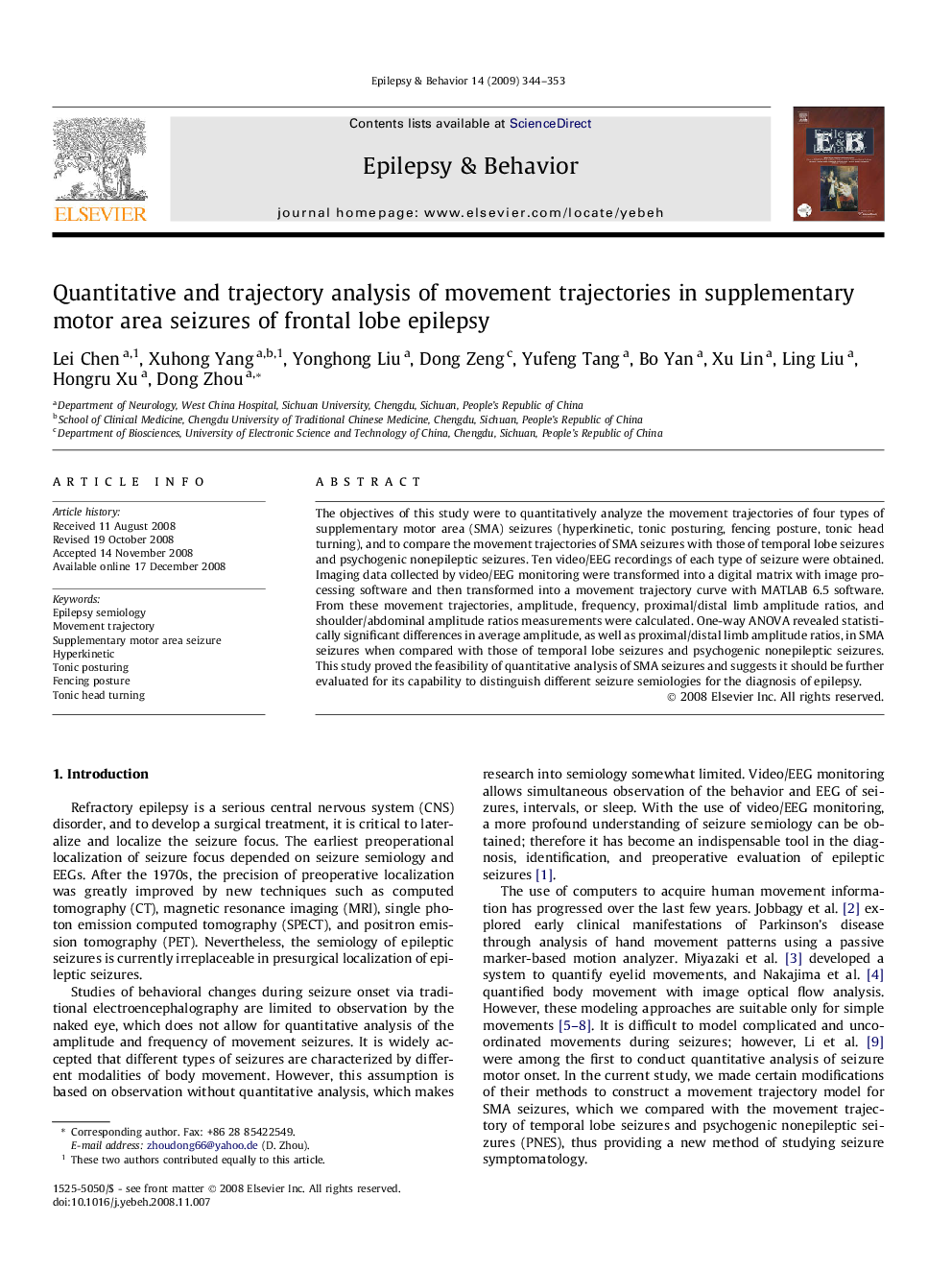| Article ID | Journal | Published Year | Pages | File Type |
|---|---|---|---|---|
| 3051159 | Epilepsy & Behavior | 2009 | 10 Pages |
The objectives of this study were to quantitatively analyze the movement trajectories of four types of supplementary motor area (SMA) seizures (hyperkinetic, tonic posturing, fencing posture, tonic head turning), and to compare the movement trajectories of SMA seizures with those of temporal lobe seizures and psychogenic nonepileptic seizures. Ten video/EEG recordings of each type of seizure were obtained. Imaging data collected by video/EEG monitoring were transformed into a digital matrix with image processing software and then transformed into a movement trajectory curve with MATLAB 6.5 software. From these movement trajectories, amplitude, frequency, proximal/distal limb amplitude ratios, and shoulder/abdominal amplitude ratios measurements were calculated. One-way ANOVA revealed statistically significant differences in average amplitude, as well as proximal/distal limb amplitude ratios, in SMA seizures when compared with those of temporal lobe seizures and psychogenic nonepileptic seizures. This study proved the feasibility of quantitative analysis of SMA seizures and suggests it should be further evaluated for its capability to distinguish different seizure semiologies for the diagnosis of epilepsy.
